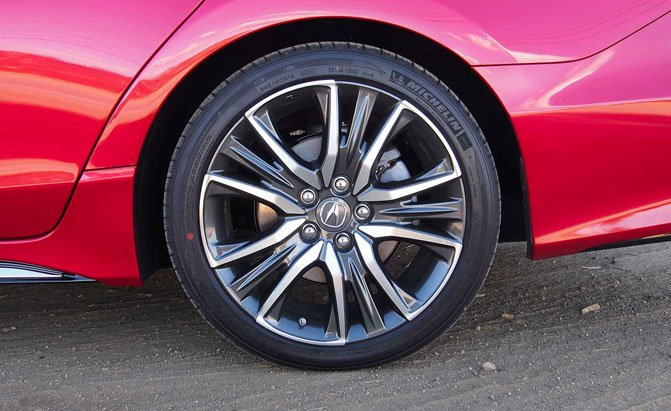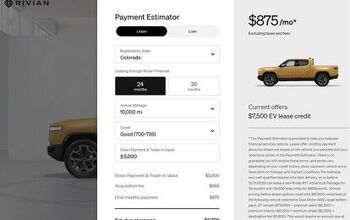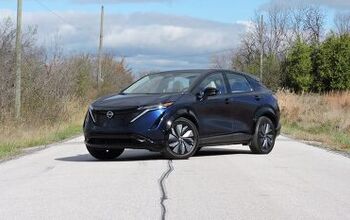What Cars Have Rear-Wheel Steering?
Four-wheel steering was once a gimmick, a not-quite-ready technology most famously embraced by Japanese sports cars at the beginning of the ’90s before eventually fading from the market. Revived on occasion in the ensuing decades — perhaps most notably by GM’s ‘QuadraSteer’ pickups — it has seen a surge in applications in recent years, especially among luxury brands.
The reason? Computer controllers and the software that goes with them are now sophisticated to the point where they can actively manage the angle of the rear wheels in a variety of different situations, which means it’s possible to fine-tune steering response without the headaches found in past implementations. In a world where cars and trucks alike are increasingly managed by an array of silicon nannies, four-wheel (or rear-wheel) steering is the next logical step in curating the driving experience.
See Also: Rear Wheel Steering: How (and Why) Does it Work?
Where can you find four-wheel steering on the current market? Let’s take a look at the vehicles that are currently employing this chassis technology.
The Sports Cars
Ferrari currently offers a pair of rear-steer models. The first is the Ferrari GTC4Lusso, the ‘family’ four-seat hatchback (with both rear-wheel and all-wheel-drive models offering the system), with the second being the 812 Superfast. The latter also makes use of an entirely electric power steering system. Ferrari uses its four-wheel steering to both steady its cars when making course corrections at high speed (by keeping the wheels in phase with each other), as well as counter-steering at lower speeds to improve maneuverability (within 3 degrees of motion).
In-country rivals Lamborghini also offer a four-wheel steering system on both the open and closed versions of the Aventador. As with Ferrari, the rear wheels can deflect as much as 3 degrees at lower speeds in a counter-steer motion, while high-speed in-phase motion is restricted to 1.5 degrees.
Fun fact: by moving the wheels on the front and rear axles out of phase with each other, you can effectively ‘reduce’ the wheelbase of the vehicle, making it easier to turn in tight spaces. Moving in-phase does the opposite, stretching out the wheelbase to improve stability. On the Aventador, for example, the four-wheel steering system ‘cuts’ roughly 20 inches between the axles, while also ‘adding’ almost 30 inches while on the highway.
See Also: 2018 Lamborghini Aventador S Roadster Review
What other sports cars take advantage of this unique four-wheel steer benefit? If you order the Lexus LC 500 with the Performance package, you get ‘active rear steering’ (2 degrees of phase), while the Lexus RC 350 F Sport (in rear-wheel drive form) also offers the feature. Mercedes-AMG has made the system available on the AMG GT in both R and C trims, while a number of Porsche 911 models also provide four-wheel steering.
The Big Sedans
Given how well four-wheel steering works to improve parking capability and tight-quarters handling, it’s perhaps no surprise that the larger luxury sedan segment is the one that is most enamored of this technology.
See Also: 2019 Audi A6 Review
Both the Acura TLX and RLX can be had with P-AWS (Precision All-Wheel Steer), a system that doesn’t just turn the rear wheels in tandem with the fronts, but can actually individually actuate the left and right axles (as long as you order front-wheel drive; the AWD editions of each car P-AWS-free). Audi’s all-wheel steering system is available in the A6, the A7, and the A8, with the flagship offering a staggering 5 degrees of movement out back, while BMW offers four-wheel steer on both the 5 Series and the 7 Series.
As with its coupes, the F Sport versions of the GS sedan and the full-size LS 500 both get four-wheel steering, while Cadillac (the CT6 ) and Porsche (the Panamera) also put in single showings in this category.
The SUVs
Why so few SUVs with four-wheel steering? By our count, there’s just a few out there: the Q7 from Audi, its Lamborghini Urus platform-mate, and, surprise, surprise, the Porsche Cayenne, another hauler that shares similar underpinnings. The new BMW X5 features the new technology as well as part of an extra off-road package.
See Also: 2019 BMW X5 Review
This list seems likely to keep growing as four-wheel steer technology becomes less expensive to install. The lack of SUVs on this list also feels like an outlier – after all, if big four-door cars can benefit, the sport-utilities and crossovers would seem to be the next logical segment waiting to have – at the very least – the parking experience improved by swinging rear wheels. Look for this feature on the options sheet the next time you’re shopping, and consider whether the additional complexity it brings to the table is balanced out by the convenience.
More by Benjamin Hunting





































Comments
Join the conversation